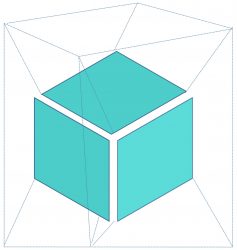Technology of cars and in cars has evolved rapidly with the move towards the smart cars. Smart cars are characterized by many additional sensors, almost permanent connectivity to the producer’s software platform, the internet, autonomous driving capability or, potentially, remote control. We might still curse some nostalgic feelings of being in driving seat, but the supervision of our capability to drive and monitoring of behavior has reached impressive levels of perfection beyond the fasten your seatbelt sign and alarm. The software that is driving our cars has become the challenge of the coming years and with this the concern for data privacy and cyber security. Smart cars have multiple cameras to guide driving and parking effectively. These cameras are also a perfect spy even around or in your home. From our smartphones we all know the scanning of connectable Bluetooth devices or wlan nearby. Smart cars are powerful assistants in data collection sometimes even beyond your control, for example who these data are sent to. June Yoon (2024-10-2 Financial Times) has developed this rationale even further to stir up additional fears: “A hacked self-driving car might even be turned into a weapon”. The weaponization of beepers, talky-walkies is certainly not the last step in this process of potential dangers of technology. Smart cars come with additional risks, not only additional comfort. Better choose your rollercoaster wisely. 
Buzzing free
It is always a chance to be in a city that bans cars for some time from streets and bicycles and pedestrians can walk freely in the city. On September 22nd 2024 this is the case in Brussels. In addition, the public transport system allows people to buzz around the city free of charge. Of course this is an invitation to get to know areas of the city where you normally don’t take the time to visit or mix with people. The police used the time to teach children how to cycle in a city in all security and respecting basic rules despite the enthusiasm for speed or going round in circles. Unfortunately, this happens only one Sunday out of 52 in a year. It is just amazing how the feeling of safety on the road changes again. The level of noise and pollution drops to levels of the countryside. Buses and trams pass the city easily and most people get around faster than they do on other days of the year. It is a bit like a coordinated health intervention for the stressed urban survivors. This experience is a modest reminder of how nice it was in Paris during the Olympic Games 2024 when prioritizing mobility beyond cars haa been effectively implemented for several weeks.

Cars electrified
It is not only cars, but the whole automotive industry that got somehow electrified. The U.S. have imposed a 100% tax on electric cars produced in China recently. Europe is feeling the heat as well (compare Fressoz in Le Monde 31.5.2024). Production of cars is not a for fun activity. It is firmly embedded in our economic system which believes in profit maximization even at high environmental costs. Therefore, the production of cars follows the logic to build cars that generate the highest profits. Bigger cars yield bigger profits and this has been known for decades. Why should we expect our car producers to deviate from this logic. Investors push hard in this direction as well. Small e-cars generate small profits. This can only be economically valid if large numbers are produced. China’s home market has the market size and air pollution levels that make this a viable strategy also for the lower income people. If not sold in the US or Europe, the home market is able to absorb huge amounts of electrified cars. Downsizing of cars needs to happen particularly in inner cities. The implementation of this is not going to be easy and without resistance.

AI Racing
AI has entered the racing of cars after we have been racing horses, dogs and camels for many decades. The fact behind all these races is the huge market for gambling. Anything you can bet on will do for juicy profits in that industry. The recent “Abu Dhabi Autonomous Racing League” is the latest addition to the racing craze. Moving online with 600000 spectators at its peak on video and gaming platforms the investment seems promising. The only problem, AI is not yet ready to really compete with the world of real drivers. The progress, however, is astonishing. Just one lap of 2 minutes on the circuit yields 15 Terrabyte of data from 50 sensors. These are closed circuits so no person can enter or animal can get in their way. The challenge to integrate more data and faster processing as well as algorithms for fast decision making is steep. Great learning opportunities for advances in robotics. The hype has not been able to live up to the expectations as no real racing took place yet. We have replaced the gladiators of the Roman empire with Formula 1 drivers. It is only fair to retire those drivers soon and let AI race cars against each other. It feels like a computer game on screen and it is as we shall most likely watch these races on a screen as well. Hence, what is the point. Watching youth on TWITCH play racing games will probably not change the viewing behavior of the masses. The programmers have nevertheless great learning opportunities and will find their way rapidly into the job market. The other challenges of ASPIRE seem more important for humanity like human rescue and food for the growing world population. In the meantime let the boys play around with cars and learn about potentials as well as failures of AI-programmers and dealing with both.

Trending
Some cartoonists or scientists have a special capacity to sense and to explain upcoming trends. Put in a humoristic form the audience you are likely to reach will by far exceed the numbers you might reach otherwise. Loriot had a gift in this respect which is much acclaimed in Germany. Taking issue with the obsession of driving a car and all sorts of topics related he foresaw the trend to massive expansion of road traffic and what this trend, if extrapolated, will do to us. Mankind will change, men will no longer be kind. We return to animal-like behaviour and become slaves of the new technologies we create. Bad weather at least makes us rethink our mobility patterns. 

